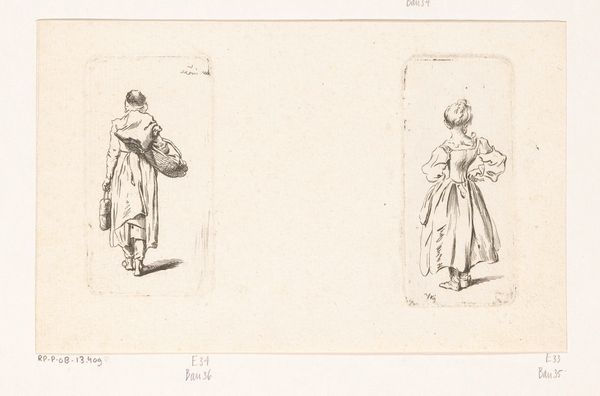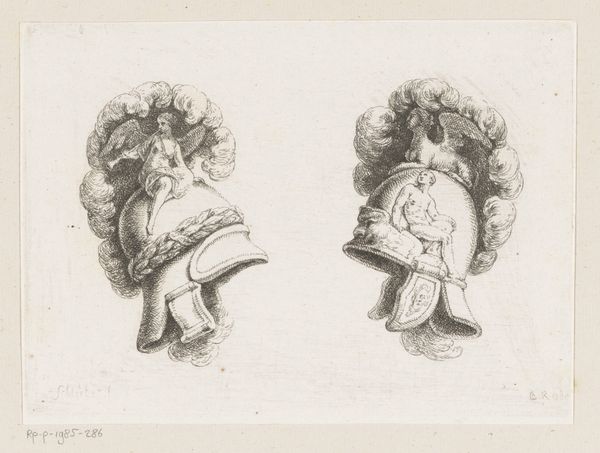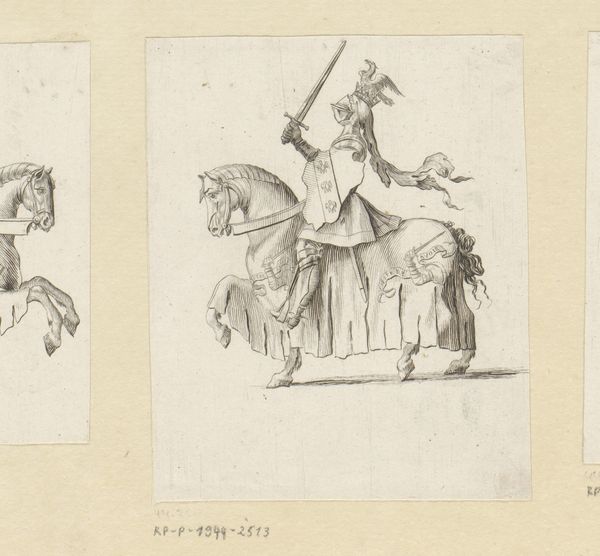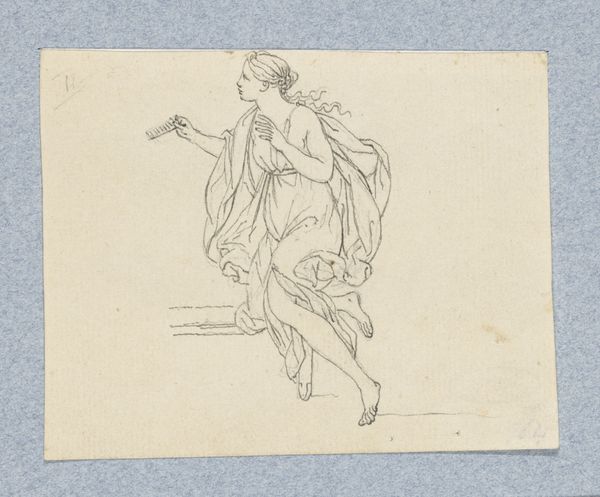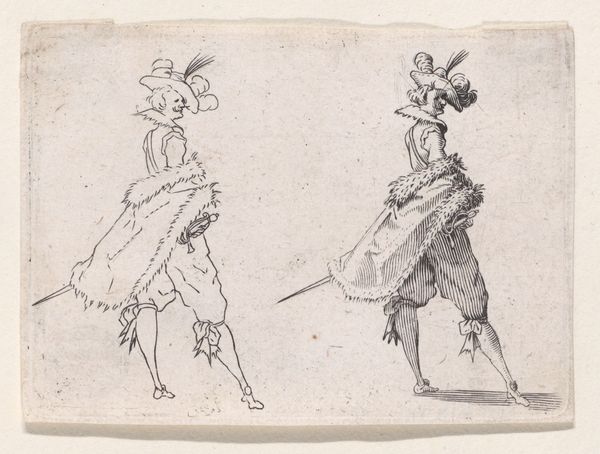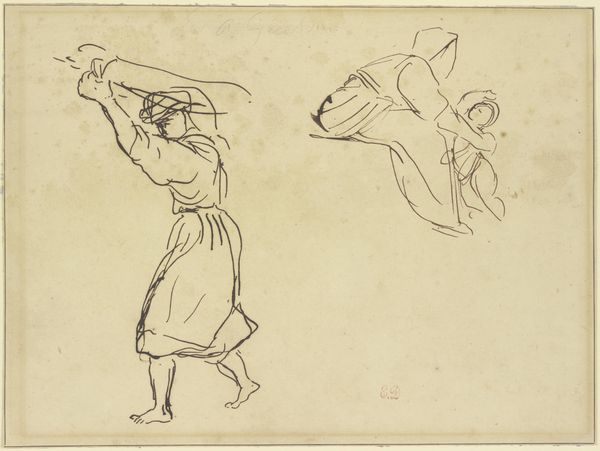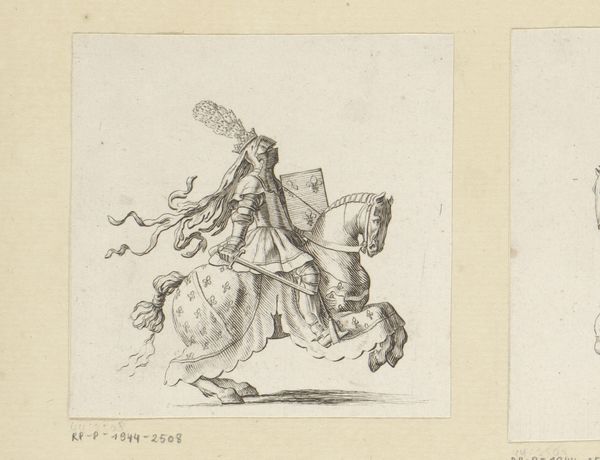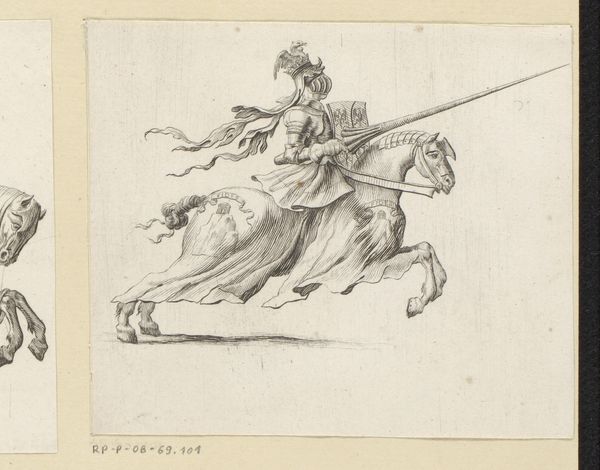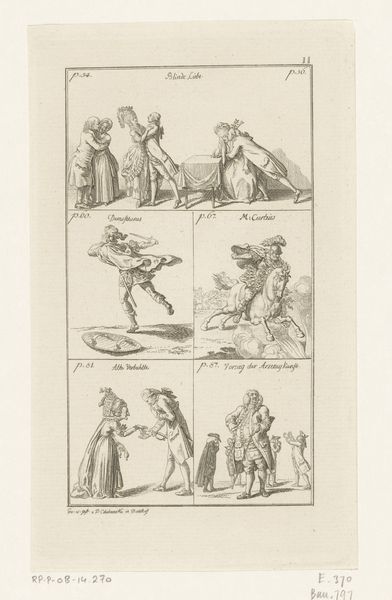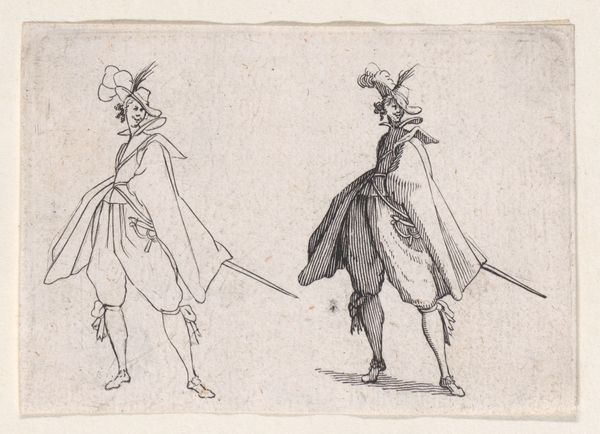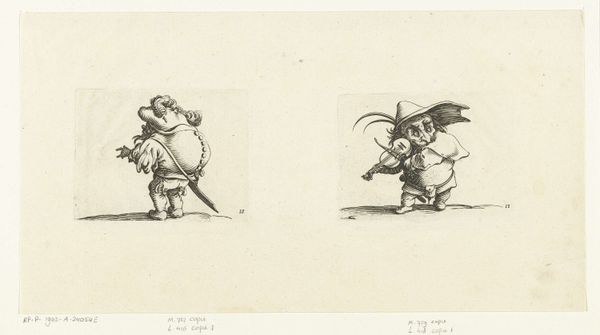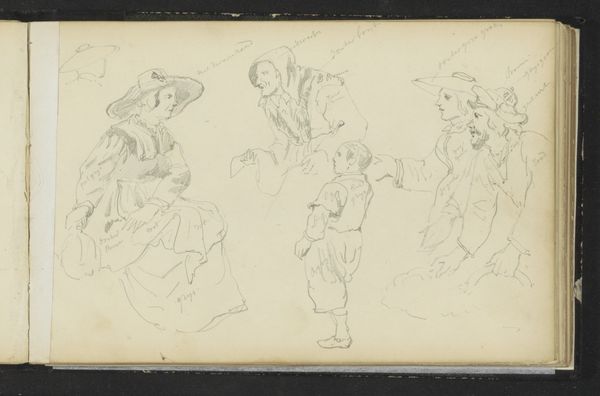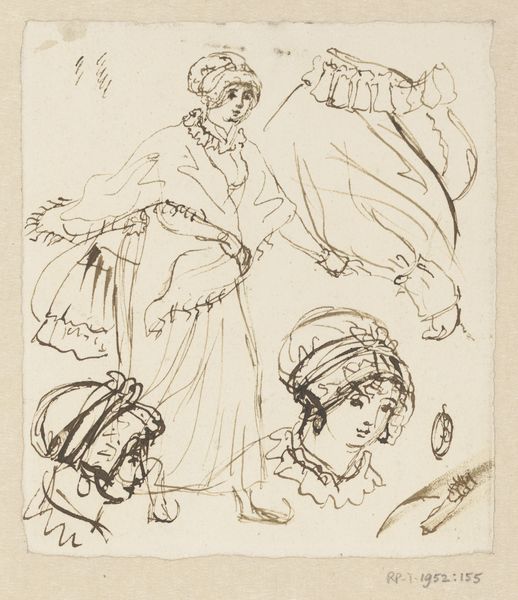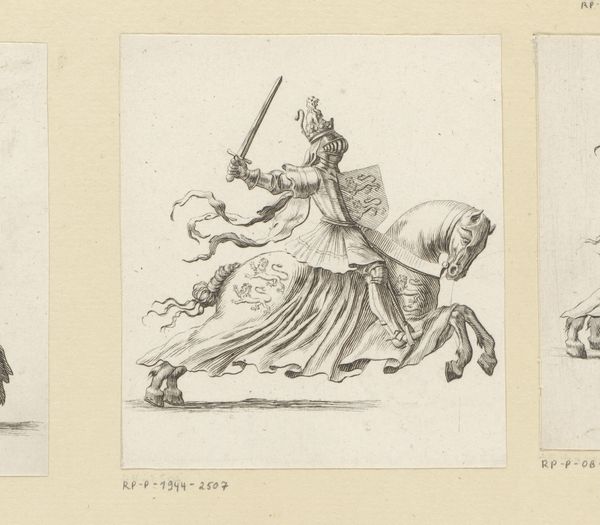
Dimensions: height 133 mm, width 157 mm
Copyright: Rijks Museum: Open Domain
Editor: This drawing, “Twee afbeeldingen van Ajax,” created sometime between 1709 and 1771 by Laurent Cars, presents two depictions of the Greek hero Ajax. I find it interesting how one panel shows him almost defeated, with outstretched arms, while the other shows him ready for battle. How do you interpret this work? Curator: Indeed. Note how Cars gives us two sides of the same hero – the vulnerable and the valiant. But observe closely; each Ajax embodies different *cultural* memories of heroism. One figure is "d'Homère," referencing Homer's *Iliad,* emphasizing Ajax's tragic flaws and human suffering. His discarded shield and open arms speak of defeat, yes, but also raw emotion. Editor: So it's not just a story of bravery? Curator: Precisely! Now, look at the second Ajax, "de Longin." He is armed, stoic, seemingly invincible. This references the Greek writer Longinus, but the specific association with Ajax isn’t so clear. Longinus spoke on literary heroism, elevating Ajax beyond the Homeric version. Each rendering functions as a visual key, unlocking specific cultural interpretations. Do you see how these images present not just a warrior, but an evolving *idea* of heroism? Editor: That makes so much sense! One embodies vulnerability and human fallibility, while the other is the stoic, almost idealized hero. Curator: The beauty of studying iconography is witnessing this cultural memory made visible. Laurent Cars's drawing gives us a visual language, reminding us how stories and symbols reshape our understanding of iconic figures like Ajax across generations. Editor: I see that the two depictions showcase cultural memories, and the use of symbols from past writings enrich its understanding. Thanks for revealing a different viewpoint.
Comments
No comments
Be the first to comment and join the conversation on the ultimate creative platform.
